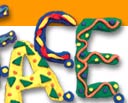|
You might not realize that as our world population grows, the
population of other species is threaten. When we build more houses
along the sea shore, or clear rain forests for farming, or harvest
the fish from river beds without replenishing, we set into motion
events that can threaten the survival of other species. This threat,
if not addressed, can mean the extinction of some species of wildlife.
Why does our growth hurt the survival of other species?
When we clear land or change the natural landscape by the building
of houses and such, we destroy the natural habitats of the wildlife
who were living there. We destroy the places where they nest and
sleep. We destroy the places where they go to find food and water.
We destroy the safe places for them to have and raise their young.
|





